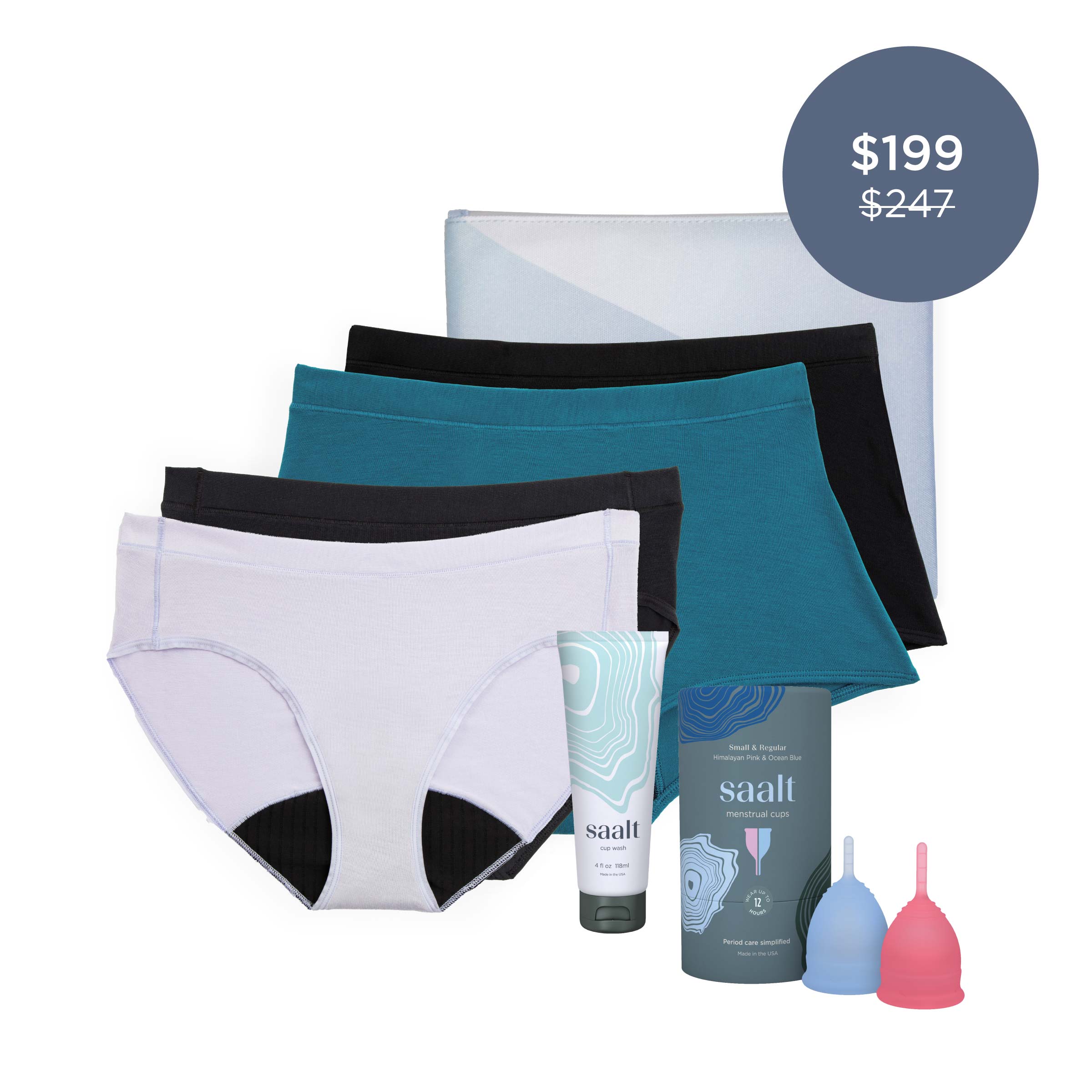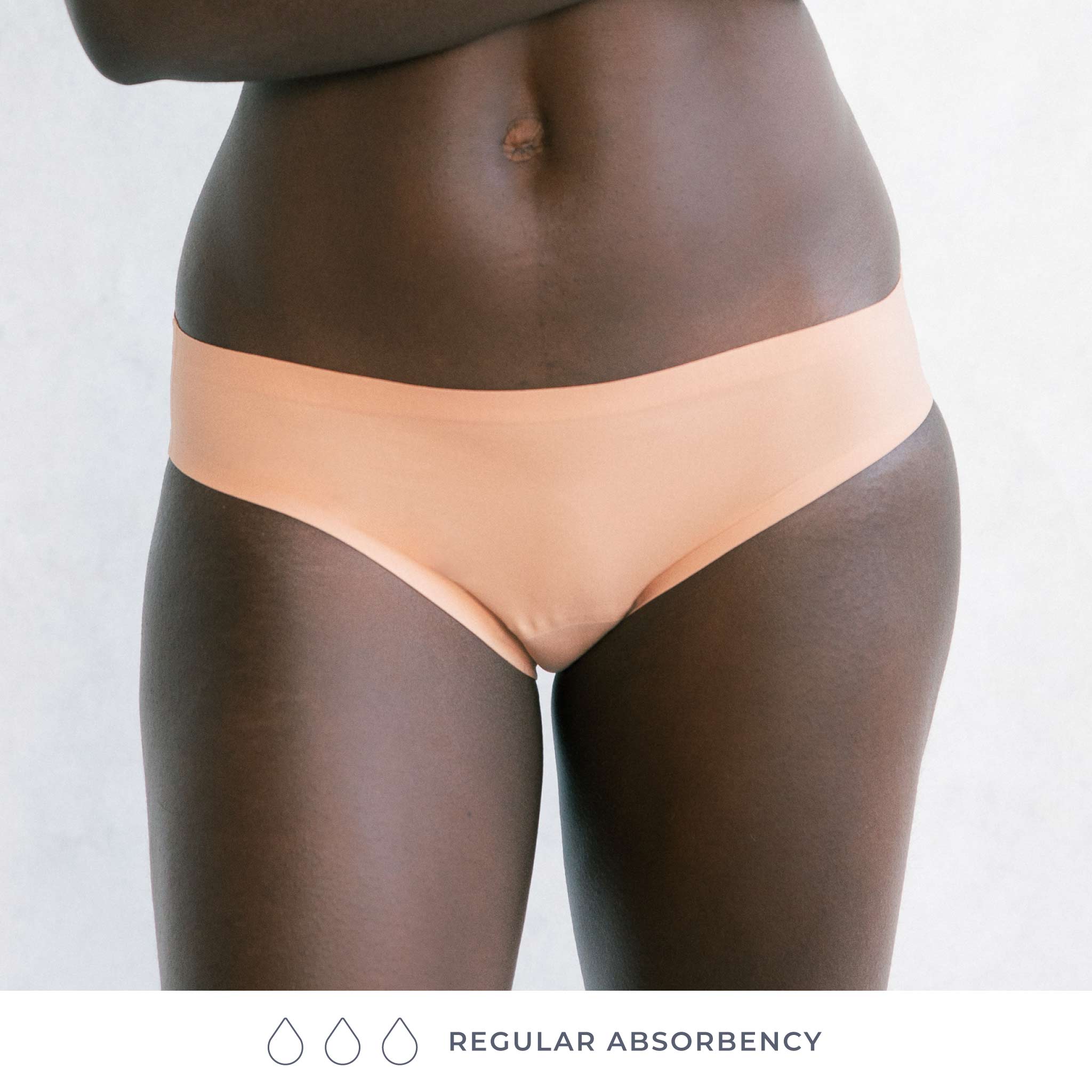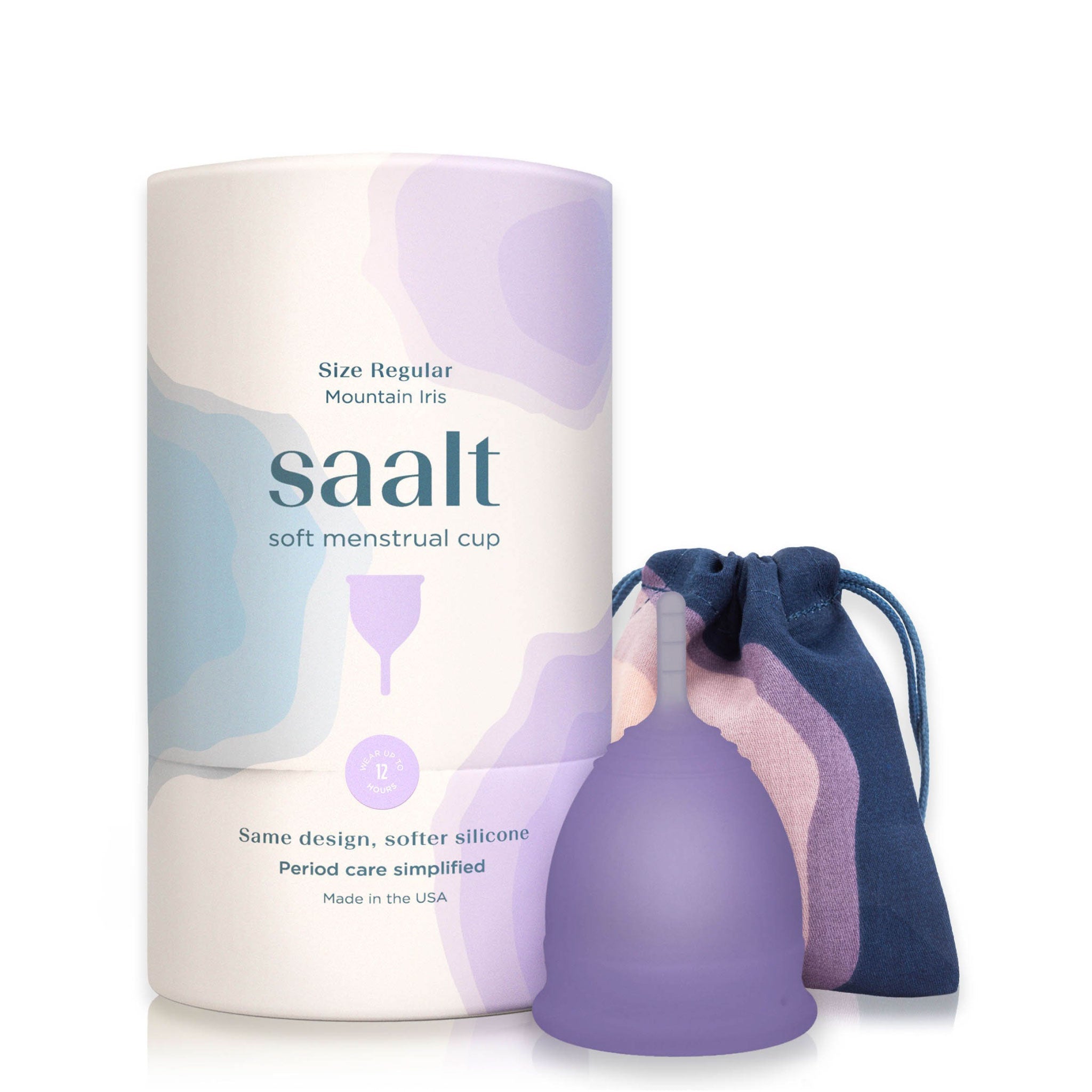Menstrual cramps, medically coined “dysmenorrhea,” are a common inconvenience for many people who menstruate. Cramps, typically accompanied by discomfort and sometimes intense tenderness, may happen before and/or during menstruation. While they can vary in intensity and duration, understanding the underlying causes can help individuals manage and alleviate this monthly inconvenience. Additionally, utilizing the period products that will help best mitigate discomfort is important, and variable for each individual. First, let’s discuss and identify what causes menstrual cramping.
The cause of menstrual cramps can vary from person to person. Prostaglandins are hormone-like substances created by the body. During menstruation, the uterus contracts to shed its lining. Higher levels of prostaglandins can lead to intense, more uncomfortable contractions for some people, resulting in cramping.
As the uterus contracts to expel its lining, this can cause pain, especially if the contractions are more pronounced than usual. The intensity of contractions may vary from person to person, contributing to variances in pain levels experienced during menstruation.
Endometriosis occurs when tissue, similar to the uterine lining, starts to grow outside of the uterus. During menstruation, this tissue may become irritated and inflamed, leading sometimes to severe cramping and pelvic pain.
Uterine fibroids are noncancerous growths that can occur within the uterine wall. Depending on their size and location, they may contribute to pronounced menstrual cramping and discomfort.
Similar to endometriosis, adenomyosis involves the abnormal growth of endometrial tissue within the muscular wall of the uterus. This condition may lead to more painful periods and severe cramping.
Stress and poor lifestyle habits, such as the absence of exercise or an unhealthy diet, may aggravate menstrual cramping. Stress hormones may affect menstrual cycles and amplify pain perception.
Because the cervix and vaginal tissue may become inflamed or tender during menses, using inserted period products, like tampons, can be uncomfortable for some people. Additionally, estrogen levels tend to be the lowest right around the time of menses. Low estrogen levels often contribute to vulvar and vaginal dryness which often leads to feelings of increased pressure, cramping, and discomfort while using tampons. During the menstrual phase, aside from being tender, the cervix is also often firm, but will usually soften during the ovulation phase. Many people report that cramps are intensified when using tampons due to the pressure the dry tampon puts against their cervix. Additionally, many people report that making the switch to a menstrual cup relieves cramping and even shortens the length of their period due to the following reasons:
- Menstrual cups, like the Saalt Cup, are made of soft, medical-grade silicone and collect flow instead of absorbing it. A tampon, when initially inserted, is firm and dry and often pressed up against the cervix to absorb flow. When a menstrual cup is inserted properly in relation to the cervix, the cup will fit snugly in the vaginal canal below the cervix, not touching it (for high cervix folks), or the cervix will gently cradle within the cup (low cervix folks) while the cup “catches” period flow. For these reasons, many people report their menstrual cramping greatly reduced or alleviated when making the switch to menstrual cups or discs from tampons.
- Because tampons are made from cotton, and are initially dry and hard upon insertion, they can create mini fissures or “micro-tears” on the vaginal wall during insertion and wear. Ever pulled out a dry tampon? Yep, you get it. Many people report their periods to be shortened in length when making the switch to a menstrual cup or disc from tampons due to the reduction of micro-tears on their vaginal wall. Are we saying that tampons prolong periods? We might be, everyone is different. Furthermore, the FDA regulates and classifies tampons as medical devices, meaning they are not subject to the same labeling laws as other consumer items. However, while many companies voluntarily disclose what's in their tampons, many others do not because they simply don’t have to. Translation: Do you know what you’re putting into your body and how it could be contributing to cramping or additional bleeding during your period?
Everyone is different in their level of discomfort during their period, and how they choose to mitigate that discomfort. Some remedies and pain management people choose include:
- Over-the-Counter Medications like nonsteroidal anti-inflammatory drugs (NSAIDs) like ibuprofen. These may help alleviate menstrual cramping by reducing inflammation and reducing prostaglandin production.
- Applying heat therapy to the lower abdomen may assist with muscle relaxation, and alleviate cramping. Heating pads, microwaved warmed corn or rice bags, warm baths, or even hot water bottles can provide relief.
- Regular physical activity and exercise can reduce the severity of menstrual cramps by increasing blood circulation and releasing endorphins, the body's natural painkillers.
- Many doctors report that consuming a balanced diet rich in fruits, vegetables, whole grains, and lean proteins can help regulate hormonal balance and reduce inflammation, potentially easing menstrual cramps. Talk with your doctor if you have questions about changes in your diet.
- Practicing relaxation techniques such as deep breathing, yoga, and meditation can help alleviate stress and reduce the intensity of menstrual cramping.
- In cases of severe menstrual cramps or underlying conditions like adenomyosis, endometriosis, or fibroids, medical intervention may be necessary. Hormonal birth control methods, such as oral contraceptives or IUDs (intrauterine devices), may assist with regulating menstrual cycles and reducing cramping. Talking with your doctor should help give you the best direction on how to approach this.
- If you prefer inserted period products, choosing products like menstrual cups or discs over tampons may help relieve cervical pressure thereby alleviating cramping. Additionally, switching from tampons to a menstrual cup or disc may reduce period length due to the avoidance of micro tears on the vaginal wall.
Menstrual cramps are a familiar and often adaptable aspect of menstruation. While occasional discomfort is normal, severe or debilitating cramps may indicate an underlying medical condition that requires attention by a physician. By understanding the causes of cramping, and implementing effective management approaches, people can alleviate the discomfort associated with menstrual cramps and improve overall quality of life. How you period is up to you. Making the switch to a menstrual cup or disc might be the upgrade you need to alleviate your cramps and elevate your period.





